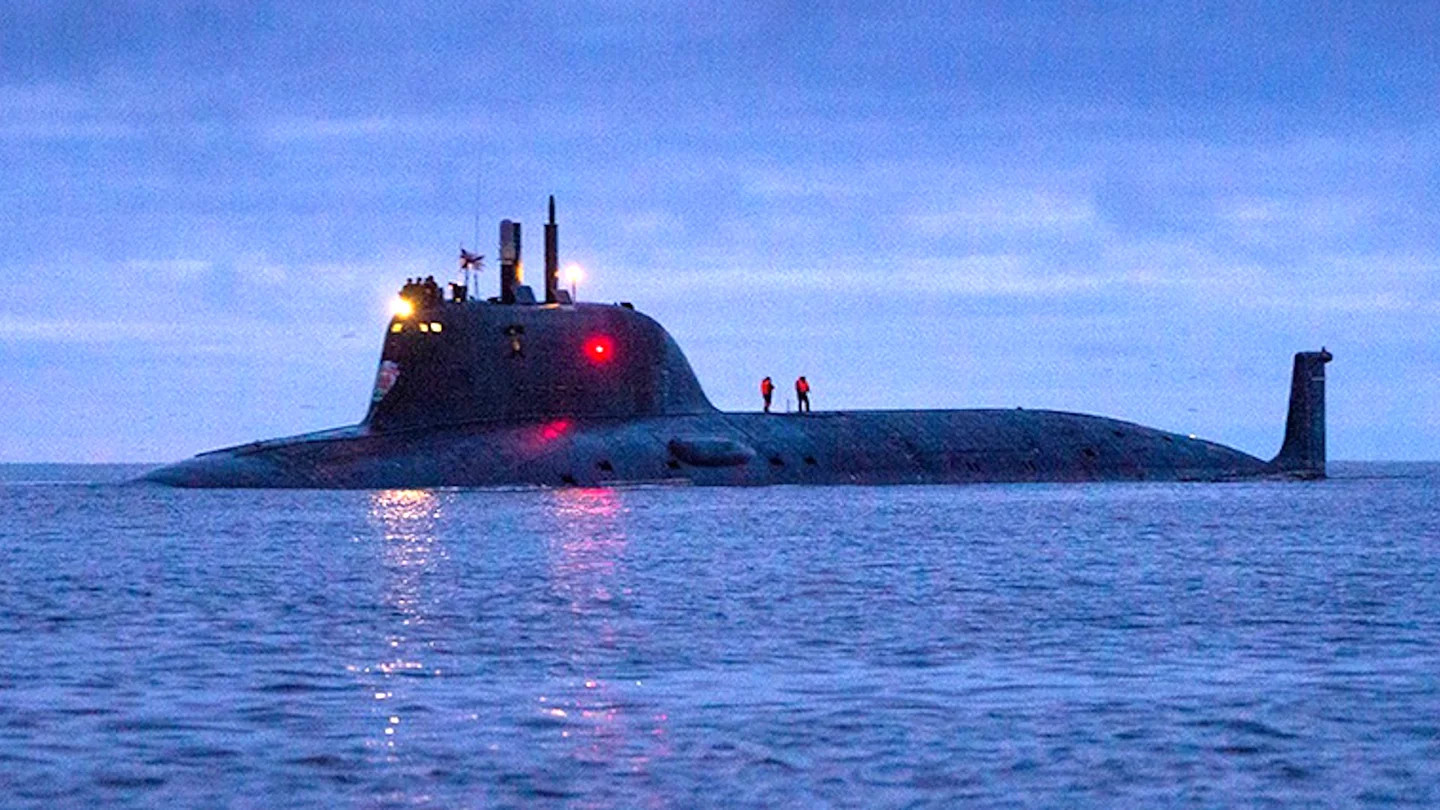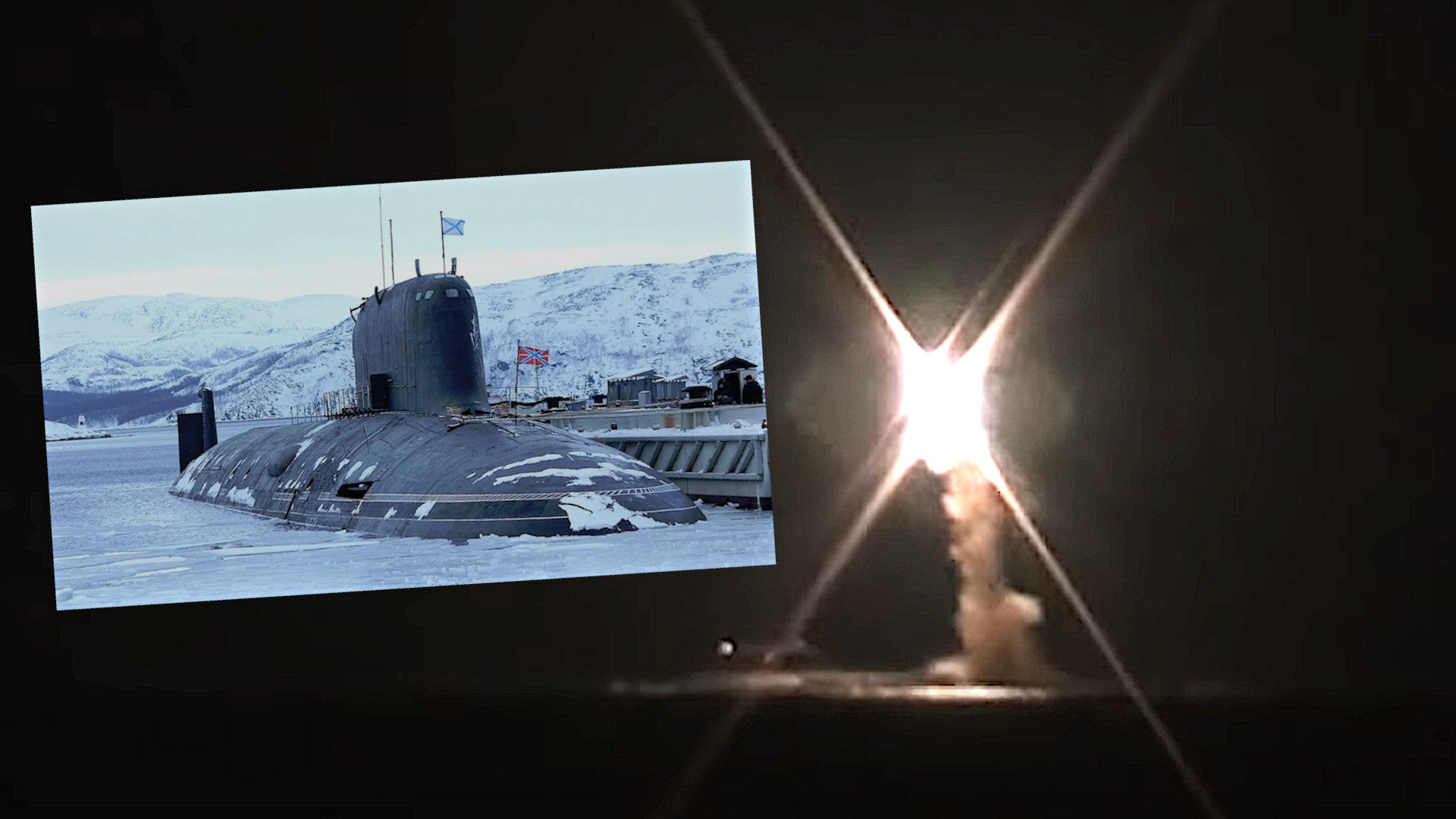Russia says it has successfully test-launched the 3M22 Zircon hypersonic cruise missile from a submarine for the first time. The Russian Navy’s nuclear-powered Yasen class submarine Severodvinsk, an advanced and extremely quiet design that American officials have said is “on par” with types in U.S. Navy service, reportedly launched one of these fast-flying missiles while sailing on the surface and another while submerged.
Both launches took place on October 4, 2021, according to the Russian Ministry of Defense. The ministry did not provide details about Severodvinsk‘s test launch while running on the surface but did include some details about the one the submarine conducted while submerged. The official statement said the second test launch was conducted while the boat was in the White Sea at a depth of just over 130 feet and the missile hit a target in the neighboring Barents Sea.

No information was provided as to the total distance the Zircons flew in either test launch, or about their peak speed or overall performance. The Russian Ministry of Defense released a video, seen above, that it said showed the test launch from the surfaced Severodvinsk.
TV Zvezda, the Russian Ministry of Defense’s official television channel, also aired that clip, as seen below, along with others, including submerged missile launches from submarines, but it’s unclear if any of the other footage is from these reported tests today. When Russian officials announced what they said was the first successful launch of a Zircon from a ship, involving the Project 22350 frigate Admiral Gorshkov, experts and observers questioned whether an accompanying video released at that time showed this new weapon or an older one, such as the Oniks supersonic anti-ship cruise missile or a member of the Kalibr subsonic cruise missile family.

The Russian Ministry of Defense says that the video below shows the first launch of a Zircon missile from a ship, the Project 22350 frigate Admiral Gorshkov.

By the Russian government’s own admission, the development of Zircon has been fraught with technical issues and delays. The actual maturity and capabilities of the weapon, a clear complete view of which has not been publicly released to date, is unclear. In 2019, Russian President Vladimir Putin had indicated the missile, which may have anti-ship and land-attack capabilities, would be able to reach a top speed of Mach 9 and have a range of around 620 miles. The Russian Ministry of Defense said that the missile fired from Admiral Gorshkov last year hit a speed of “more than Mach 8” and flew 280 miles.
In August, Russian Deputy Defense Minister Alexei Krivoruchk said trials of the Zircon missile would be finished by the end of this year. It’s also worth noting that, in 2019, Krivoruchk identified the Project 949A Oscar II class submarine Irkutsk, which is not expected to return to the fleet from a major overhaul until next year, and the Project 1155 Udaloy class destroyer Marshal Shaposhnikov as being among the first vessels expected to carry Zircon missiles operationally. President Putin had previously announced the weapons would be part of the arsenal available to the Russian Navy’s Project 22350 frigates. In principle, any Russian ship or submarine fitted or refitted with a variant of the new “universal” 3S14 vertical launch system should be able to fire Zircon, among other missiles.
If the Russian Navy has indeed successfully test-fired Zircons from the Severodvinsk, and the weapon is finally making real progress in its development, this could be a combination that would be of particular concern to the United States, as well as its NATO allies. The Severodvinsk is set to be a one-of-a-kind boat, but the Kremlin is in the process of acquiring a fleet of subvariants, known as the Yasen-M class, the first of which was commissioned into service earlier this year.

The Yasen-Ms are smaller than Severodvinsk, but also reportedly have various improvements, including changes that further reduce their acoustic signature, making them harder to detect and track. The original Yasen design, also known as Project 885, was already understood to be very quiet and otherwise advanced compared to existing Russian submarines. You can read more about the Yasen and Yasen-M
here.
Back in 2019, the state-run Russia-1 television channel did air a segment in which newscaster Dmitry Kiselyov bombastically claimed that submarines carrying Zircon missiles could put targets along the East and West Coasts of the United States at risk during a potential major conflict between the two countries. The segment bizarrely identified a number of former U.S. military installations that have been closed for years, including Fort Ritchie in Maryland and Fort McClellan in California, as among the potential targets for these weapons. It also specifically mentioned the Jim Creek Naval Radio Station, an obscure naval facility used to send very low-frequency transmissions to U.S. Navy submarines in the Pacific.
It is important to note that Zircon is expected to have a shorter overall range than many members of the existing Kalibr series, including variants capable of carrying nuclear warheads. At the same time, U.S. officials have acknowledged that the Yasen and Yasen-M class submarines do present new challenges to the security of the homeland, concerns that would only be magnified by the integration of hypersonic cruise missiles into their arsenals.
“Russia just fielded their second Sev [Severodvinsk] class, which is on par with ours,” U.S. Air Force General Glen VanHerck, head of U.S. Northern Command (NORTHCOM) and the U.S.-Canadian North American Aerospace Defense Command (NORAD), told members of Congress earlier this year. “Within a five-year period, they’ll have eight to nine of those submarines, which will be a persistent proximate threat off of our east and west coasts that we haven’t had ever in the past.”

American officials have also previously cited how Kalibr missiles already allow the Russian Navy to hold friendly capitals, among other targets, in Europe at risk, especially when launched from submarines that may not even have to leave port to carry out their strikes. Zircon, even with its shorter range, would again add a new dimension to the complete threat picture in that region.
The United States, along with other countries, has been warning in recent years of increasing competition with Russia, and the potential for conflict, as result, in other areas, as well. This includes in the Arctic and the Pacific, where any future high-end fight would have a major maritime focus and where Zircon could have a significant impact on operations.
The real threat Zircon presents when fired from any platform, of course, depends on the actual capabilities of the weapon and how much progress the Russians have truly made in its development in the past few years. How close the Russian Navy might be to getting any substantial quantity of these weapons is unclear, as well, with Russian defense procurement plans often being upended by budgetary concerns and other issues. Hypersonic air-breathing vehicles are notoriously complex systems that have proven challenging for various countries, including the United States, to develop even on an experimental basis in the past. A briefing that individuals from Boeing presented to the Military Affairs Committee of the Abilene Chamber of Commerce in Abilene, Texas, last month indicated that Russia was closest to fielding an operational air-breathing hypersonic weapon, but it’s unclear what information this assessment was based on.
All told, it remains to be seen whether the Russian government will offer harder evidence to support its statements about Zircon’s design and performance as the end of the year, by which point the weapon’s official test phase is supposed to have wrapped up, draws closer.
Updated 3:55 PM EST:
The Russian Ministry of Defense has now released an extremely brief video clip that appears to be of the submerged test launch.

Contact the author: joe@thedrive.com
